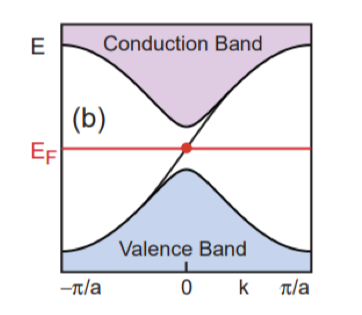Consider one edge state for a Chern insulator. It could have the band structure as shown below.

We can see that the band for the edge state does not obey $E_{-\pi/a}=E_{\pi/a}$. I remember the property: $E_{k}=E_{k+G}$ (where G is a reciprocal lattice vector) is a consequence of Bloch theorem which is guaranteed by the periodicity of the lattice. Since the periodicity along the direction of k is not broken here, why is this band not periodic by $2\pi/a$?
